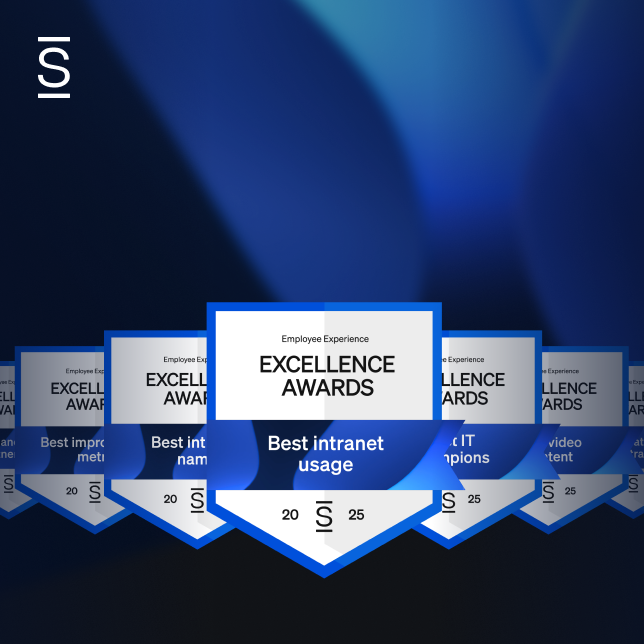A big part of internal communications is engaging, informing and aligning the organization’s employees but it’s equally important to get buy-in from your executive leadership. Our ROI on Internal Communications Series focuses on how to make a successful business case to get sign off from your organization’s leadership team on key initiatives.
Organizations are more distributed and traditional intranets fail to accommodate the needs of today’s workforce. Internal Communicators need to align on how a better intranet can map to tangible business outcomes. Many software investment pitches follow a comparable problem-solution approach.
Simpplr has laid out three common business use cases that use a common framework to distinguish between the current pain and desired improvements. This approach will help you delineate symptoms from where you want to go and force you to think about why that matters. You’ll learn how outcomes and ROI approaches go beyond merely measuring vanity metrics like logins and content consumption.
Three ways organizations justify new intranet initiatives
Justifying Technology Modernization
Many intranet projects get approved simply because companies have old, legacy software in house. This reason generally means the organization is struggling to get employees to use the software. Usually, companies are also allocating too much time and headcount toward cumbersome administration.
Symptoms You May Have a Problem
- Employees don’t use your intranet
- Your intranet is not up-to-date, and employees can’t find reliable information
- Your intranet looks old, is hard to use, and hasn’t been upgraded
- Parts of your platform are stale or no longer supported (e.g., some integrations no longer work, old communities have been abandoned, etc.)
- Too much IT Ops budget is spent on maintaining the legacy platform
- Processes the intranet is supposed to support get circumvented. (e.g., too many employee support requests, company updates sent through emails, documents inconsistently shared in messaging apps, etc.)
Desired Future
- Employees use the intranet, and the intranet achieves high adoption rates
- Employees are more productive with better access to up-to-date information
- Total cost of ownership (TCO) goes down with less technical oversight and full-time administration
- Employees are always on the latest and greatest software
- Content creators and business users no longer depend on technical resources to make day-to-day updates
How to quantify ROI
- Time saved by eliminating IT bottlenecks
- Time and cost savings with faster deployments and upgrade times
- Reduced TCO from freeing up administrators and technical time
- Improved engagement and alignment from higher adoption
ProTip: Don’t just survey how much time employees spend on ownership; calculate it too! Qualitative information is stronger when you use quantitative numbers to support your statement. For example, if you spend 1,000 hours on administration, that is an estimated $15,500 in lost costs that affect the bottom line!
Improving Employee Engagement with Better Communication
IC professionals typically see the purpose of their roles to improve employee engagement. While employee engagement and company culture are immensely important, they’re difficult to quantify objectively. Distributed work and COVID-19 have amplified the importance of investing in communications technology. Now is an excellent time to make your pitch.
Pro tip: Find someone in leadership who naturally understands the importance of communication, culture, and engagement. Start there. Make them a champion. And with their support, take your case to the broader organization.
Symptoms You May Have a Problem
- Employee engagement (and possibly employee retention) are low
- Distributed employees are out of sync and many are ill-informed
- Employees have little visibility into what’s happening with other departments and locations
- Critical company updates are sent through email (which often get passed up)
- Leadership communications to the broader organization lack a centralized location
- Employees requesting essential company in ad hoc manner
- News and knowledge are tribally shared through too many disparate channels
- The company gossip mill is churning with false information
- Merged companies continue to operate in silos and don’t have a unified identity
Desired Future
- A single centralized location for frequently asked questions and communications
- Employees are ubiquitously informed, less stressed with up-to-date company information
- Remote and distributed employees are equally informed and connected to the workplace
- Employees have the improved ability to find information, collaborate, and network across the organization
- Leadership has an uncluttered platform to communicate vision, priorities, values, and results
- Reinforced company values strengthens employee morale
- The company has reduced email creation/ownership, redundant content production, and support requests for information
How to quantify intranet ROI
- Measure the percentage of employees reading critical communications
- Run ‘recall’ tests: Test employees’ knowledge on critical information they should have consumed in recent weeks
- Track improvements in employee engagement scores and other culture markers (such as external Glassdoor scores)
- Track and trend your organization’s voluntary turnover rates relative to your industry
Employee engagement tool or productivity tool?
While IC professionals often see intranets as employee engagement tools, IT often sees intranets as productivity tools. Both are correct! Depending on your role, it’s important to understand the other point-of-view and align with other groups on what you want to solve.
Simplify the Digital Workplace with a Single Source of Truth
Many see the ideal intranet as an employee’s ultimate source of truth. When done right, the intranet can serve as a front door to the broader digital workplace helping employees improve productivity and reduce frustration by guiding them to reliable, up-to-date information.
It’s important to note a distinction between the “source of truth” and an “everything hub.” While intranets should house everything, employees struggle with information overload more than information access. Instead, intranets should be highly curated and reserved largely for critical one-to-many type communications. For example, intranet content should gravitate toward news and knowledge that is needed across departmental lines. Less is more, especially for large, complex organizations. This level of clarity will help your organization better align and ultimately drive a more successful intranet.
Symptoms You May Have a Problem
- Essential company information is spread over too many disparate knowledge bases across the organization
- It is difficult for employees to find reliable up-to-date information. Many documents are fragmented, out-of-date, and unreliable
- Employees arguably have access to too much information, and systems make it difficult to sort through the information
- New hires struggle to find information and experts to help them to ramp up, and struggle to integrate with the company
- It’s challenging to enable employees en masse during wide scale change initiatives (e.g., digital transformation projects, merger integration, product launches)
- Even though processes are documented, IT and HR departments suffer from too many support requests
Desired Future
- Employees have a single source of truth to find reliable, up-to-date information
- The intranet employees navigate their broader digital workplace, connects with other critical systems, and doesn’t overwhelm employees with too much information
- It’s easy to find and connect with experts across the organization
- New hires integrate easily and are given tools to succeed
- Organizations have a means to communicate critical, top-down information to every employee
How to quantify intranet ROI
- Track employee time spent looking for relevant content
- Measure increased usage of intranet AND all other applications with the digital workplace
- Survey employee satisfaction with support resources
- A/B test new hire onboarding processes and calculate how much can be saved by ramped time-to-productivity
- Run scavenger hunt tests: Test and measure time spent, retrieval accuracy, and satisfaction for employees to find critical information
- Measure compliance and certifications during major change initiatives
- Measure decreases in HR and IT support tickets
Going through a major company change?
Many organizations justify a new intranet purchase to help facilitate change communications. Common examples include mergers & acquisitions, massive technology deployments (e.g., a new HR system), and new hire onboarding during rapid growth. It’s easier to align with major company initiatives than to create your own.

















